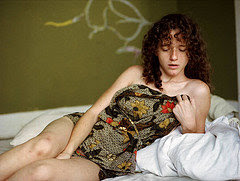The success of the month-long promotion of Indonesian crafts at Harrods seems to have spurred the Unity, Culture, Arts and Heritage Ministry to consider establishing trading houses to market batik in Europe.  Given that batik recorded more than a three-fold surge in export sales last year and was one of the best-selling products at the famous department store, the attention to this textile product is understandable. Moreover, given that the ins and outs of exporting can be a daunting task for local batik producers, most of whom are too new and too small to make it on their own, trading companies which link buyers and sellers can tap into the rising international demand for Indonesian batik. No doubt, without the promotion by Kraftangan Indonesia, the local batik makers and designers would have had great difficulty in displaying their collections at the high-end, high street shop in London. Neither would they have been able to travel to foreign trade exhibitions and fashion shows to profile their creations and promote their work without the support of government agencies and other organisations like the Batik Guild.
Given that batik recorded more than a three-fold surge in export sales last year and was one of the best-selling products at the famous department store, the attention to this textile product is understandable. Moreover, given that the ins and outs of exporting can be a daunting task for local batik producers, most of whom are too new and too small to make it on their own, trading companies which link buyers and sellers can tap into the rising international demand for Indonesian batik. No doubt, without the promotion by Kraftangan Indonesia, the local batik makers and designers would have had great difficulty in displaying their collections at the high-end, high street shop in London. Neither would they have been able to travel to foreign trade exhibitions and fashion shows to profile their creations and promote their work without the support of government agencies and other organisations like the Batik Guild.
That said, however, while cottage and small enterprises like the batik industry need a helping hand from the government to flourish in the world market, it does not follow that the ministry should set up trading houses. Even though state ownership of enterprises no longer seems to be the bad idea that it was in the heyday of the market economy, it would still be bad business for a ministry devoted to the arts and culture to be involved in such an enterprise. To be sure, there is a potential for batik to become a commercial success in the international fashion industry. As much as the government has a role to play in providing the finance, technology and marketing to make this happen, the commercialisation of a traditional handicraft should largely be the work of others in the public and private sectors.
Of course, the potters and weavers need retail outlets to sell their wares, musicians and dancers need stages to perform, and the painters and sculptors need galleries to showcase their works. While the ministry should indeed continue to promote batik and other crafts and provide the spaces that the artisans and artists need to sustain their livelihood, it should nevertheless resist the temptation to stray too far. Its core business should be on the cultural rather than the economic value of the arts, on keeping the arts alive as a cultural heritage rather than on the commercialisation of culture.


0 Response to "The business of batik"
Post a Comment